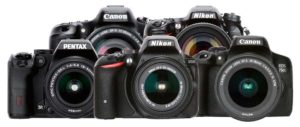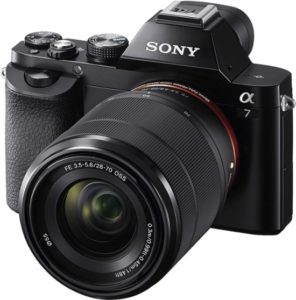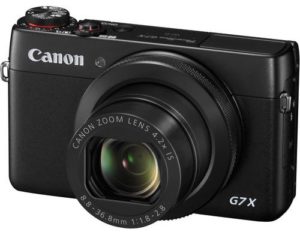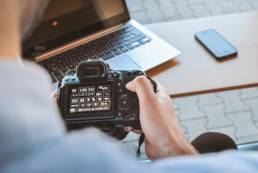Your ultimate guide to buying your first DSLR
We all been in this tricky situation with a few bucks in our pockets determined to invest in a gadget. The process is very exciting, yet quite intimidating and confusing when you have no clue what to look for, or what characteristics are ideal for your needs.
In this article I will take you through my set of recommendations to help you make the right choice of your first DSLR camera.
Do you really need a DSLR?
Yes I know, these big professional looking cameras are very tempting and look like a guarantee for world class pictures with a simple click. Spoiler alert! NO, IT’S NOT!
DSLRs were created for a specific purpose which it to give photographers a complete control over the settings of their cameras in a way that will enable them to create the images they envision in their mind and not the way the camera processor decides to.
What type of camera do you need?
There are different types of cameras to satisfy every person’s need. We will take you through the four major types of cameras and it’s up to you to choose which one is the more suitable for your needs.
DSLR

(Digital Single Lens Reflex) are cameras that use a single lens reflex (SLR) and mechanical shutter mechanisms. They are distinct with their optical viewfinder that allows you to see directly through the glass, interchangeable lens capability and big sensors.
Pros: Wide choice of lenses, durability, Battery life, complete control over the camera settings, big sensor (APS-C & CMOS), Great image quality, Ideal for shooting raw.
Cons: Big camera body size, Optical viewfinder that doesn’t allow you to preview the image before taking it.
DSLRs are ideal for professionals & enthusiast photographers. However the use of a DSLR requires some photography knowledge and eventually some post-processing skills.
Mirrorless

Unlike DSLRs that use a mirror to reflect the light into the viewfinder, mirrorless cameras use a different piece of technology that allows you to see directly the image reflected in the sensor through a digital viewfinder or LCD screen.
Pros: Smaller camera body size compare to DSLRs, Electronic viewfinder that enables the preview how the picture will look before taking it, Complete control over the camera settings, big sensor (Micro Four Thirds, APS-C & CMOS), Great image quality, Ideal for shooting raw.
Cons: Bigger lenses compare to DSLR’s, battery life, laggy autofocus especially at night compare to DSLRs, small lens options.
Mirrorless cameras are ideal for enthusiasts & professionals alike, they offer the same advantages of a DSLR. However the major setbacks for the mirrorless cameras remain the battery life and the limited choice of lenses although major manufacturers like Sony are working hard on that.
Point-and-shoot

point-and-shoot cameras, also referred to as compact-cameras, are characterized with their small size, simple use. Most point-and-shoot cameras use fixed lenses, and automatic systems for setting the exposure and autofocus.
Pros: Small size, Convenience, Ease of use, Cheap price, Better image quality than smartphones.
Cons: Small sensor, Fixed lens, Lower image quality compared to bigger sensor cameras, Small control over the settings.
Point-and-shoot cameras are perfect for people that want a quick and portable way to take snapshots without worrying much about the settings or the creative aspect of photography, they can be a great alternative to smartphone cameras.
Superzoom cameras

Superzoom cameras are often described as bridge cameras that incorporate both the size and large sensors of a DSLR with the fixed lens and absence of optical viewfinder of a point-and-shoot camera.
Pros: Large zoom, Big sensor, LCD or Electronic viewfinder, Complete control over the camera settings
Cons: Fixed lens, Big size, Battery life, Lack of creative possibilities.
Sensor size
Most DSLRs come mainly in two sensor sizes, APS-C and CMOS. What’s the difference between both and what are they needed for ?
What is a sensor?
The sensor in simple terms, is the piece of the technology that is used to capture the light that the camera will later convert into an image. The sensor is composed of millions of photosites which are used to record light and color data seen through the lens. Therefore the bigger the sensor the more data is collected to create the image which results in a better quality.
Sensors are extremely expensive to produce which explains the big variation of the prices depending on the sensor size.
CMOS
CMOS also known as full frame refer to a sensor that uses the original SLR film size of (36 x 24 mm)
APS-C
APS-C also knows as crop sensor refer to sensors that are smaller than the CMOS sensors and use a crop factor of 1.5x or 1.6x relative to the full frame sensor size.
Which shall I choose?
As this article is about purchasing your first DSLR the obvious answer will be to go for an APS-C camera. Although Full-frame cameras can offer the ultimate quality, Crop-sensor cameras are not lagging behind in term of quality and to certain degree can offer results undistinguishable from the one of their big brothers. APS-C cameras also offer the advantage of fitting all types of lenses while the CMOS need dedicated full frame glass that is usually pricier.
Pixel count
Let’s get this one out of the way! The first thing people are asking when they see my camera or when they want to buy one is how many megapixels it has.
Cameras and phone manufacturers created this myth about the Pixel count and made it synonymous with image quality in the mind of many people. Of course the pixel count is something that has its advantages but it hardly affects the quality of the image.
Without getting into details of my claim, my advice is to not give the pixel count a big importance in your decision making and focus on other aspects of the camera unless you are planning to make huge prints.
Focus points

Focus points are what the camera uses to focus on a subject. The focus points can be used both automatically “AF” where the camera choses the point(s) on which it will focus, or manually “MF” where you will be the one choosing the exact point you want to focus one.
Why the focus points are important?
If you use a camera that has a limited number of focus points or most points are located at the center of the frame, you will find it extremely hard to nail your focus on subjects that will be located at the edges of the frame as you will have constantly to do what photographers call “focus & recompose” which consist of pointing your camera first at the subject and then recompose your picture in the way you wanted it initially. This practice is extremely frustrating when you are dealing with a moving subject, a moment that you want to capture quickly, and especially when shooting with fast lenses like a 85mm 1.4 where a small movements can get you out of focus.
My recommendation is to choose a camera that offers many focus points spread all over the viewfinder.
Invest in the glass not the body.
Although the camera body has its importance the glass remains the most important aspect of photography, no matter what camera body you get, you results will be mediocre with a bad lens, but we can’t say the opposite, a great lens with a mediocre body might create an art piece.
Choose the brand not the camera model.

Did you ever ask yourself why all you see during sporting and fashion events is a sea of Canon and Nikon cameras, although many manufacturers have cameras that beat those in every technical aspect?!
The reason for that is that the choice of a camera goes beyond what characteristic the camera body offers.
Lenses offering
Are the lenses available enough for your need ? do you have all the focal lengths you need for your type of photography? Before choosing the camera take a look at the lens offering of this brand and the availability of all focal length you need.
Gadgets availability
Look for a brand that has an abundance of gadgets available for it, you might not need it but it’s better to anticipate it rather than setting up a studio and finding out there are not flashes or radio triggers for the hotshoe of your camera.
It’s an irreversible choice
Here comes the ugly truth, once you invest in a camera system you are likely to be stuck with it for a long while. Many photographers will be willing to change their camera brand in a heartbeat but they can’t. Once you invest in a camera system by buying a few lenses and gadgets there is a big chance all this gear won’t work on any other brand.


